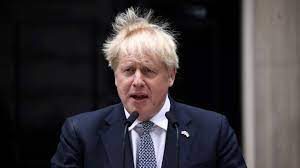On the last day of the truce, Israel and Hamas want to prolong it and prepare one more captive exchange
As Israel and Hamas prepared for a fourth swap of militant-held captives for Palestinians imprisoned by Israel, international mediators were pushing for an extension of the truce in Gaza, which has stopped the bloodiest Israeli-Palestinian fighting in decades. The ceasefire is scheduled to expire after Monday.
Israel has declared that for every ten more hostages freed, the cease-fire would be extended by one day. The four-day ceasefire, which was imposed on Friday after many weeks of indirect talks facilitated by the US, Qatar, and Egypt, has also been expressed as a goal of Hamas.
However, Israel asserts that it is still dedicated to destroying Hamas’ military might and putting an end to their sixteen-year monopoly over Gaza. This would probably entail extending its military attack from the severely damaged northern Gaza to the southern Gaza, where hundreds of thousands of Palestinians are crowded into shelters provided by the UN and where very poor living conditions continue even with increased assistance delivery under the ceasefire.
Calls to repatriate the remaining around 240 people that Hamas took during its massive raid into southern Israel on October 7 that started the conflict have gained momentum in Israel after the liberation of scores of individuals, the most of whom were women and children.
Two hostages were discovered dead inside Gaza, while sixty-two captives have been freed—one was let free by Israeli troops.
“All of the hostages may return home. Two family members of 4-year-old Abigail Edan, who was freed on Sunday and a dual Israeli-American citizen, said in a statement that “we have to keep pushing.”
Prime Minister Benjamin Netanyahu may decide to prolong the ceasefire and provide further concessions to Hamas as a result of the growing pressure from the families of the hostages, who have organized large-scale marches and protests and accused him of not doing enough to bring them home. However, Israel is still very much rattled by the incident on October 7 and is committed to eliminating the extremist organization as a threat.
“We will eventually release all of the hostages,” Netanyahu said in reference to the detainees during his uncommon Sunday visit to the soldiers inside Gaza. “We’re going to keep going to the very end, till we win. Nothing will prevent us.
Third prisoner-hostage exchange
Sunday saw the third exchange of captives under the four-day ceasefire when Hamas released 17 people, including 14 Israelis. Israel then freed 39 Palestinian detainees.
The majority of the captives seemed to be in good physical health, but Elma Abraham, 84, was evacuated to Israel’s Soroka Medical Centre in critical condition due to insufficient treatment, according to the hospital.
Three Thai nationals and nine children were among those freed on Sunday. After 17 of the Thai hostages were released, Thailand said that it was working to ensure the safe return of the other 15, who made up the biggest group of foreign captives ever released by the terrorist organization. The majority of Thais engaged in Israel are semi-skilled agricultural laborers.
The majority of the freed Palestinian inmates were youths who had been charged with less severe charges or with hurling stones and firebombs during altercations with Israeli soldiers. Many Palestinians see Israeli prisoners—including those involved in attacks—as heroes who are fighting against occupation.
As stipulated in the cease-fire agreement, a fourth exchange for a total of 50 Israeli hostages and 150 Palestinian inmates is anticipated on Monday.
Although the released hostages have mostly avoided the spotlight, information about their incarceration has begun to surface.
Merav Raviv, whose three relatives were freed on Friday, said they had lost weight and had erratic feedings. One described sleeping on a makeshift bed made of pushed-together chairs and eating mostly bread and rice. She said that in some cases, hostages had to wait hours to use the restroom.
Gaza’s Reprieve
According to the Health Ministry in Gaza, which is run by Hamas, around 13,300 Palestinians have died since the start of the conflict; about two thirds of these deaths were women and kids. The ministry does not distinguish between fighters and civilians. On the Israeli side, around 1,200 people have died, the most of them were civilians murdered in the first onslaught. Israel’s ground assault has resulted in the deaths of around 77 troops.
After weeks of nonstop Israeli shelling that forced three-quarters of the population from their homes and leveled whole neighborhoods, the ceasefire has provided some comfort to Gaza’s 2.3 million residents.
However, many claim it’s not nearly enough.
Mother of three Amani Taha, a widow, claimed she had only been able to get one can of food from a UN distribution center since the start of the truce. She had evacuated from northern Gaza to live with a host family in the southern city of Rafah. In exchange for food for her four to ten-year-old boys, she assists other families in the neighborhood with their firewood cooking.
She said that while individuals rush to stock up on necessities, local markets and petrol stations are overrun with people. According to her, “people were desperate and went out to buy whenever they could.” “They are deeply concerned that the conflict will resurface.”
More than a million Palestinians lived in northern Gaza before to the conflict; upon returning, they found scenes of extensive destruction, with building after structure either completely destroyed or severely damaged. The Palestinians who fled south are not allowed to return by the Israeli force.
According to the UN, the ceasefire allowed for the largest-scale supply of food, water, and medication since the conflict’s beginning. Even though Gaza’s demands for humanitarian aid have increased, the 160–200 trucks per day are still less than half of what the region was importing before to the conflict.







